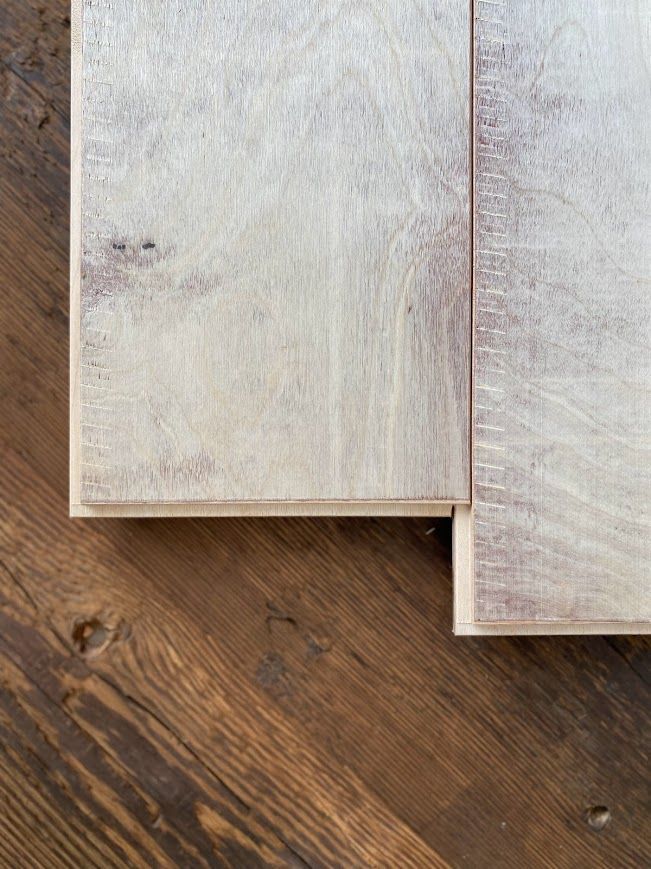What Are Glue-Laminated Beams? A Beginner’s Guide
Discover how glue laminated beams transform construction

Ever wonder how modern buildings achieve those wooden arches or long, open spaces without visible support? Glue-laminated beams, or glulam, are the answer. These engineered wood products have cutting-edge strength, making them a go-to solution for both architects and builders.
In this blog, we’ll break down what glue-laminated beams are, how they’re made, their advantages, and where they’re most commonly used. If you’re designing a home, a commercial space, or simply curious, this guide will give you a full picture of why glulam is shaking up the world of construction.
What Are Glue-Laminated Beams?
Glue-laminated beams are a type of engineered wood. They’re made by bonding multiple thin layers of timber together with strong adhesives. Imagine a wooden sandwich, where each "slice" of wood is carefully placed so the grain runs in the same direction. This process helps create a beam so strong and durable that it often outperforms solid wood of the same size.
Unlike solid timber, which might have weak spots like knots, glulam is engineered for top-notch performance. Every beam is made to meet strict standards, ensuring predictable strength and reliability for builders.
How Are Glue-Laminated Beams Made?
The process of making glulam beams starts with selecting high-quality wood, typically from softwood species like Douglas fir or southern pine. Here’s a step-by-step rundown:
- Drying and grading: The lumber is dried to the right moisture level and graded for strength.
- Preparation: Each piece is smoothed and aligned so the wood grains all run parallel.
- Adhesive application: Industrial-strength adhesives are applied between the layers. Think of it as the glue that holds these "slices" together.
- Pressing and curing: The wood layers are pressed together under intense pressure while the glue sets. This step can take several hours.
- Finishing: Once cured, the beams are trimmed, sanded, and often coated to protect them from moisture or wear.
The end result? A beam that’s incredibly strong, versatile, and ready to tackle all kinds of construction needs.
Why Choose Glulam Beams?
Glue-laminated beams offer a host of benefits, which make them a popular choice in both residential and commercial projects:
1. Impressive Strength
Glulam beams are specially designed to handle heavy loads and span large spaces without sagging. Engineers strategically place the strongest wood fibers where they’re most needed, creating a beam that’s as powerful as it is efficient.
2. Resistance to Warping
Thanks to their layered structure, glulam beams resist shrinking, twisting, or bowing. This makes them a more stable choice compared to solid wood.
3. Creative Design Options
One standout feature is the ability to bend and shape glulam beams. Curved beams, sweeping arches, or intricate designs? No problem. They bring both form and function to life.
4. Consistent Performance
Unlike natural timber, which can vary in strength due to knots or splits, glulam beams are built to meet uniform performance standards. Builders can rely on their quality every time.
5. Eco-Friendly
Glulam makes smart use of smaller trees, leaving large old forests untouched. These beams also store carbon, which is great for reducing environmental impact over a building’s lifetime.
Where Are Glulam Beams Used?
You’ll find glulam beams in a range of projects, from simple homes to large-scale public buildings. Some examples include:
- Open spaces in commercial buildings, where long spans without columns are needed.
- Churches or event halls, where arched ceilings add drama and beauty.
- Residential homes, providing strong and stylish exposed beams.
- Bridges and outdoor projects, where durability is key.
- Farms and barns, offering cost-effective construction for large spaces.
Are There Any Downsides to Glulam?
Like any material, glulam beams have their limitations. While they’re extremely strong, the adhesives used can be sensitive to extreme moisture or heat over time. Fire resistance is another consideration, though fire-retardant treatments are available.
Additionally, glulam can cost more upfront compared to standard framing lumber, but the ability to cover greater spans often reduces the need for extra support, balancing out costs.
Choosing the Right Wood for Your Project
Glue-laminated beams are a smart choice for countless construction challenges. They blend the natural warmth of wood with engineered strength, making them perfect for projects ranging from expansive commercial buildings to cozy residential homes. However, if your vision includes a slice of history and an appreciation for fine craftsmanship, reclaimed timbers could be just what you’re looking for.
At Bay & Bent, we understand both paths. Whether you’re drawn to modern solutions like glulam or prefer the character of century-old wood, we believe the right material will ultimately bring your project to life. For expert guidance, trust in our experience and passion for timber that tells a story.
To explore our reclaimed timber options and see how we can help with your project, get in touch with us.. Together, we can build something truly enduring.









